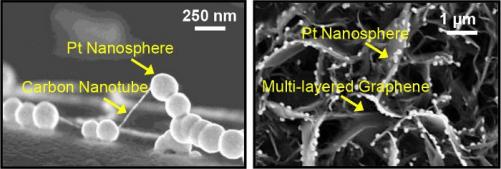Researchers from the Naval Research Laboratory at George Mason University report that graphene can replace Carbon Nanotubes (CNTs) in glucose sensors. The researchers use multilayered graphene petal nanosheets enhanced with platinum nanoparticles and enzyme glucose oxidase to monitor glucose concentrations found in saliva, tears, blood, and urine.

In past research, the researchers used CNTs with platinum nanoparticles to provide sensitive sensors. But these sensors were not stable as spacing of the nanoparticles on the CNTs significantly impacted the biosensor performance (as glucose diffusion is blocked when nanoparticles are too closely packed). In addition, they suffered from diffusion restrictions from neighboring nanoparticles.
To solve these issues, the researchers now use graphene (3D structure of multi-layered graphene petals on a silicon chip) instead of CNTs. This improved the biosensor performance. In addition, this enabled them to use the same chip to detect glucose detection in concentrations typically found in saliva, tears, blood, and urine for the first time ever.
This isn't the first time we hear of graphene-based glucose sensors. In fact, only last last month we reported on a graphene-based sensor platform developed at the University of Minnesota that will enable continual monitoring of blood glucose.